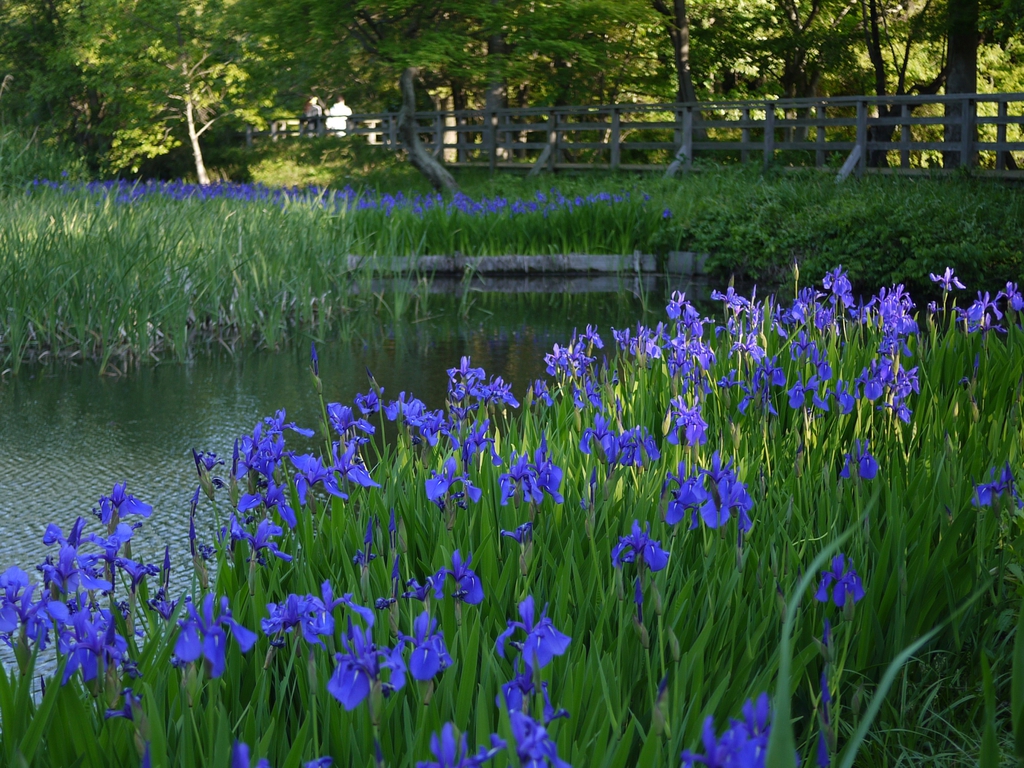Water Irises and Their Many Benefits
Water irises make excellent backdrops for ponds and wetlands, and they can also help prevent erosion. Water irises also provide refuge to visiting waterfowl. They also protect ponds from hungry fish, and are generally not eaten by deer. Read on to learn more about water irises and their many benefits.
Iris setosa
Iris setosa is adapted to watery environments. It is native to the Atlantic coast, ranging from Georgia to Maine. It grows in brackish water marshes and freshwater lakes. Its flowers are deep blue and are a few inches across. The flowers are veined and have a yellow-white signal on the sepals. The petals are small and narrow, and the plant can grow up to 12 inches tall.
The Iris setosa is cultivated in gardens and landscapes as a plant with water-loving qualities. Its foliage has a sword-like shape, a prominent midrib, and purplish undersides. It grows in dense clumps and can survive cold winters. Because it is a true water plant, it can grow in very wet conditions, and is ideal for low areas of streambanks and rain gardens. It was even given an Award of Garden Merit by the Royal Horticultural Society of Britain, which is a testament to its hardiness.
Iris brevicaulis
Iris brevicaulis has a very distinctive color pattern. Its flowers are pale blue with a yellow linear crest at the center. Its leaves are ensiform and are 3-6 cm long, 2.5 to 4 cm wide. Water iris are pest-free and free-flowering. Only a few iris species are hydrophilic, including Iris brevicaulis, Iris versicolor, Blue Flag, and the Yellow Flag.
Iris brevicaulis blooms early to mid-spring. It is found in swamps and wet meadows. It is a rhizomatous perennial with bright green leaves and flowers with blue shades.
Iris prismatica
The Iris prismatica, also called the blue flag iris, is a species of iris that is native to Canada and parts of the United States. It is also known as the slender blue flag iris. It is one of the most popular types of iris in cultivation today.
Iris prismatica is a perennial rhizomatous plant with narrow grass-like leaves and slender petalled flowers. It has blue or violet flowers with a white pattern in the center. It is deer-resistant and grows to be two to three feet wide in about five years.
Iris versicolor
The Iris versicolor is a type of blue flower. It is also known as the blue flag, harlequin blueflag, northern blueflag, or purple iris. In Britain, it is known as the purple iris. It has a wide range of common names and is found in gardens and along roadways.
Iris versicolor is a flowering perennial that grows to 10 cm (4 in) in height and can form large clumps. The leaves are approximately 1 cm wide and fold around each other at the base. Flowers are 3 to 4 inches wide and have three petals and sepals that are droopy.
Iris virginica
Virginia Irises grow in water and thrive when planted in a container. They can be planted in early spring or fall. When planting seeds, they should be spaced about 2 feet apart. After blooming, Virginia irises can be divided to encourage more flowering. You can also harvest the seed pods and compost the roots for further use. This plant is resistant to many diseases and pests. It is also deer-resistant.
Iris virginica is a perennial plant that can grow to 24 inches tall and 60 to 90 cm wide. It thrives in acidic soil and can be grown in water up to 6 inches (15 cm). In hot, humid climates, they benefit from afternoon shade. These plants are pest-free and low-maintenance and can be planted in the garden without the need for a greenhouse.
Iris laevigata
The water iris, also known as rabbit ear or shallow-flowered iris, is a beautiful perennial that requires little maintenance. It is native to Japan and is often found growing in shallow water. It can also be grown in soil that is damp. Unlike most other irises, it prefers water for growth. Its flowers bloom from late spring into early summer and continue into fall.
Iris laevigata is an exquisite water iris, with a spectacular show of sky-blue flowers on stems 20 to 30 cm tall. Its compact apple-green foliage dies back to the crown each Winter. It grows to about twenty centimeters high and a half from the crown. The plants’ leaves and flowers are arranged in attractive clusters. You can divide this species after the flowers bloom.
